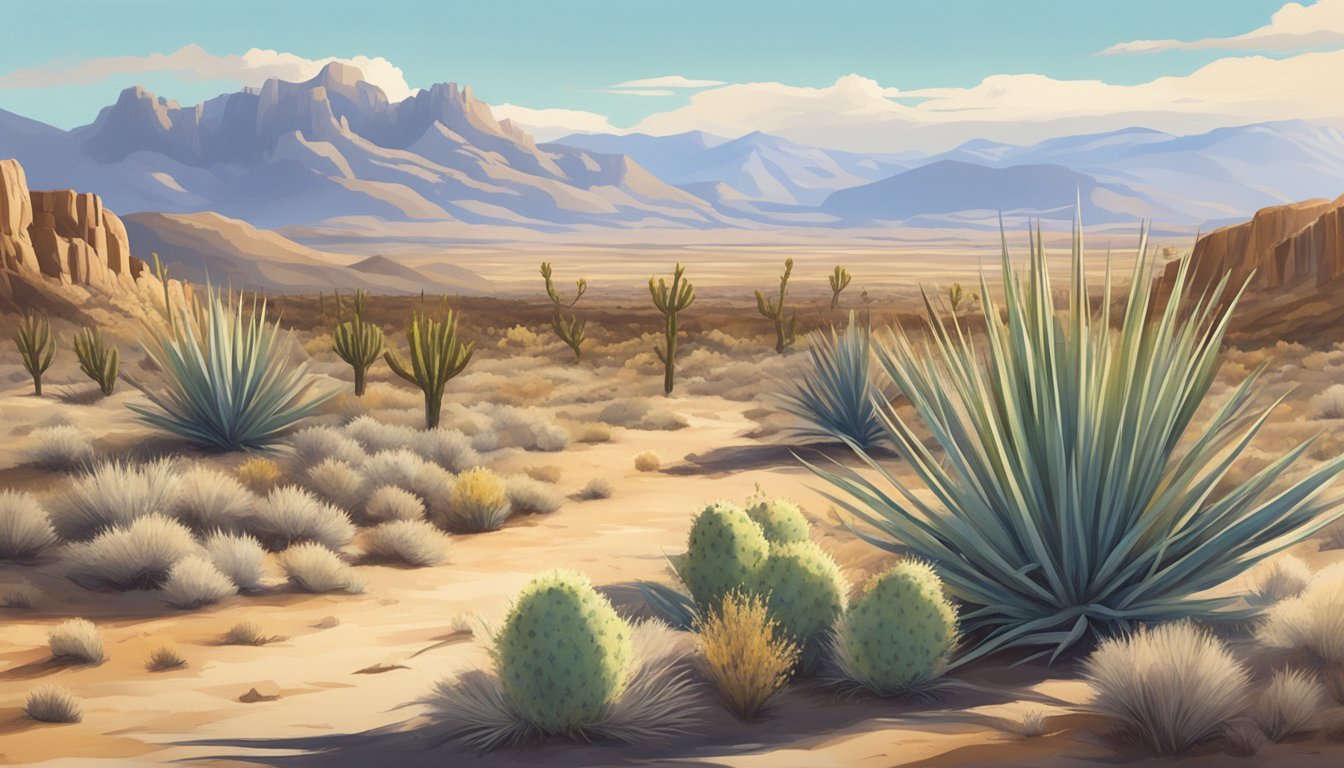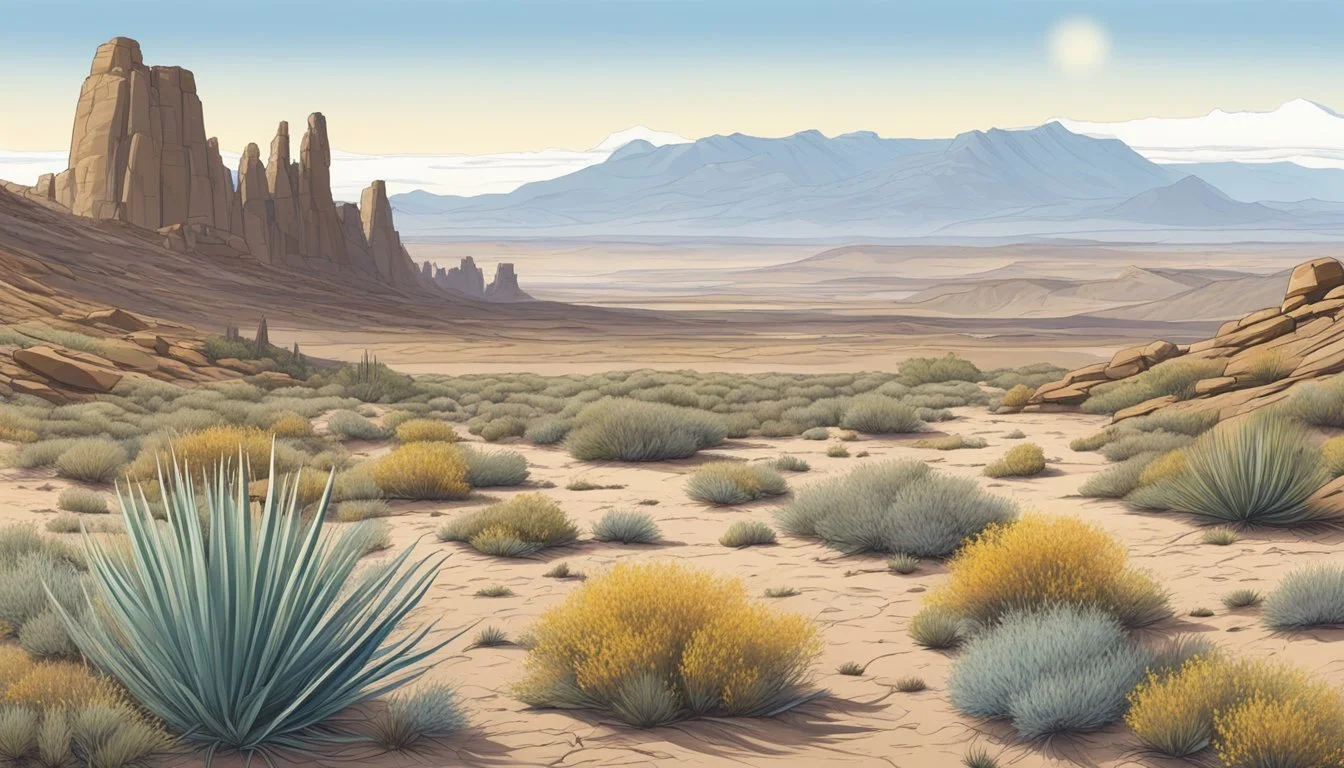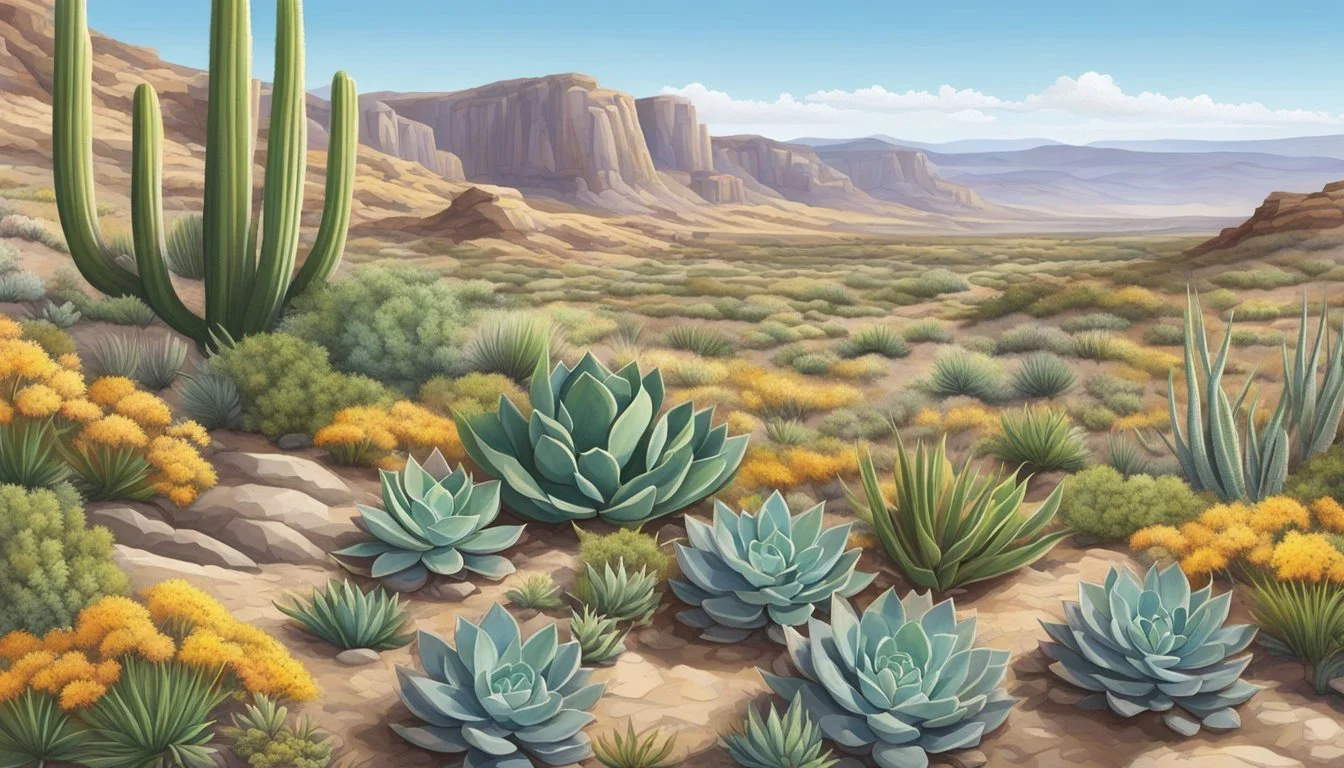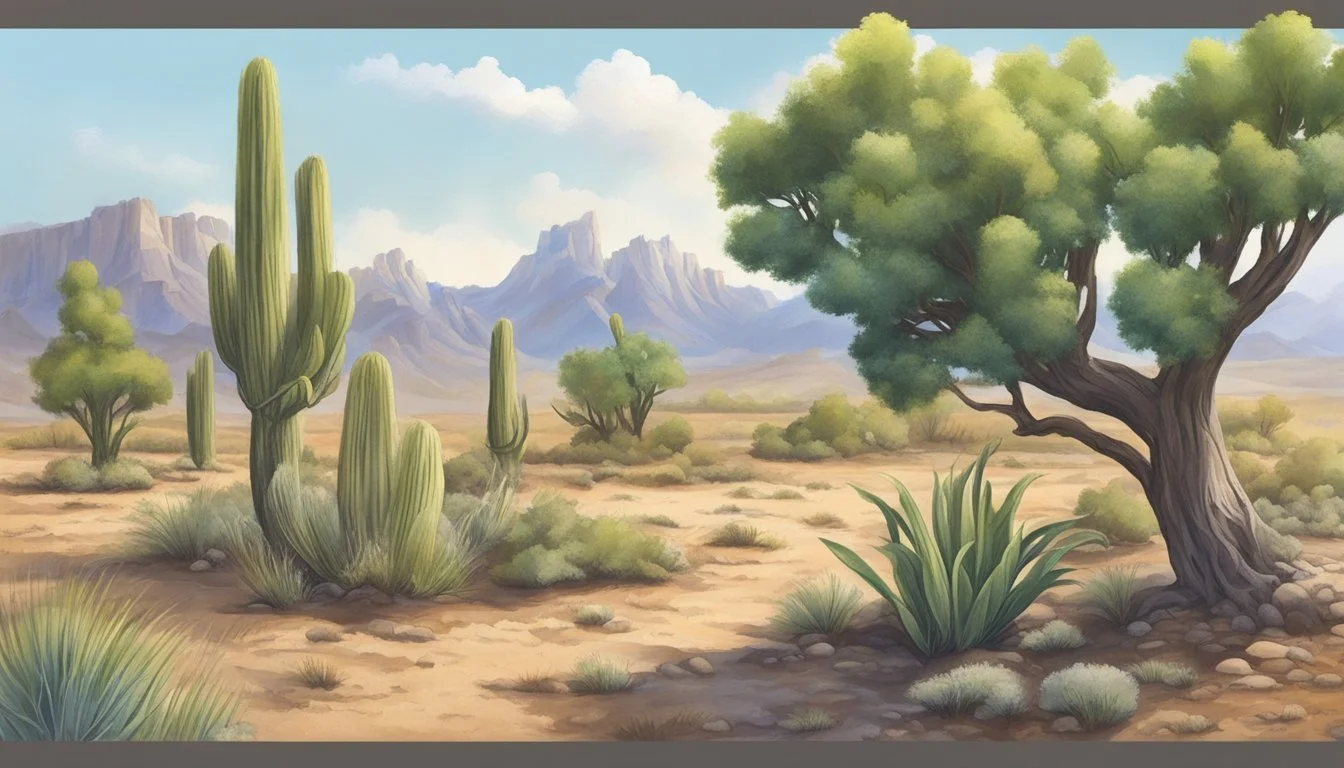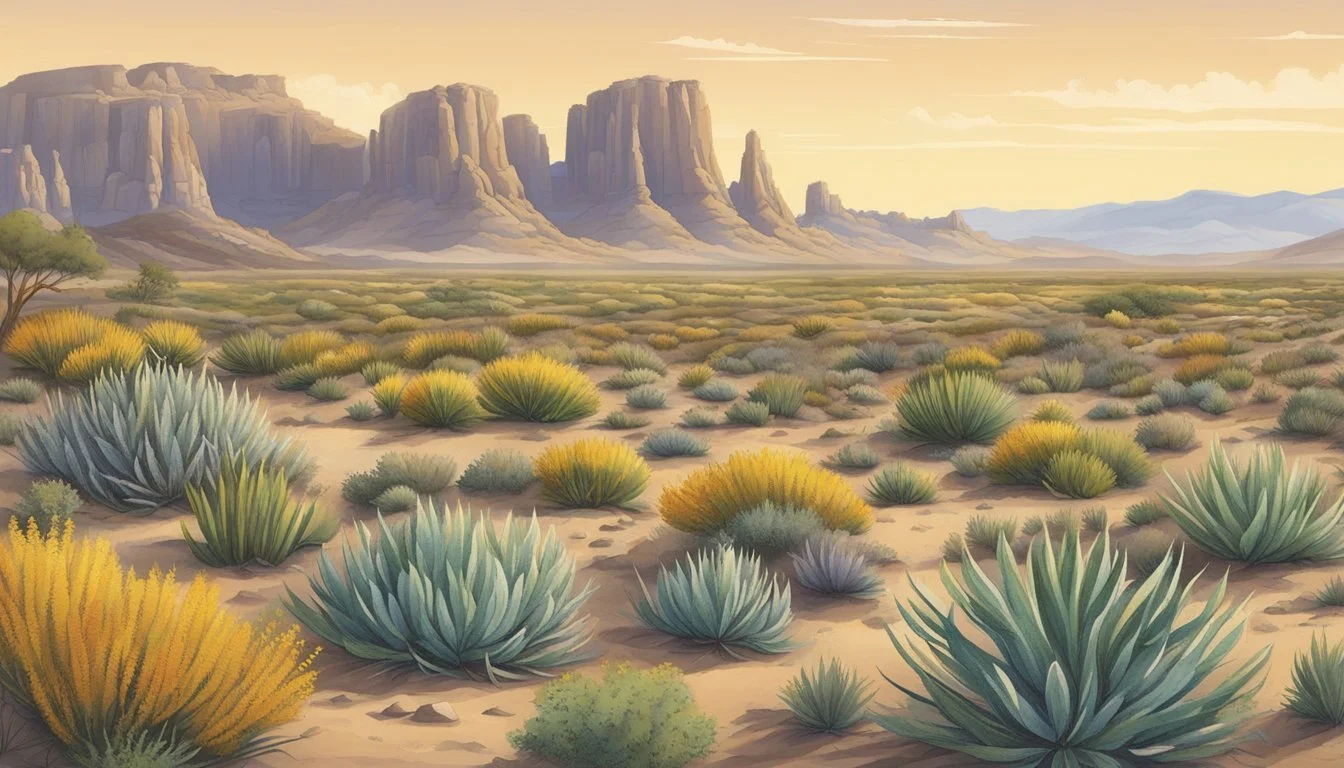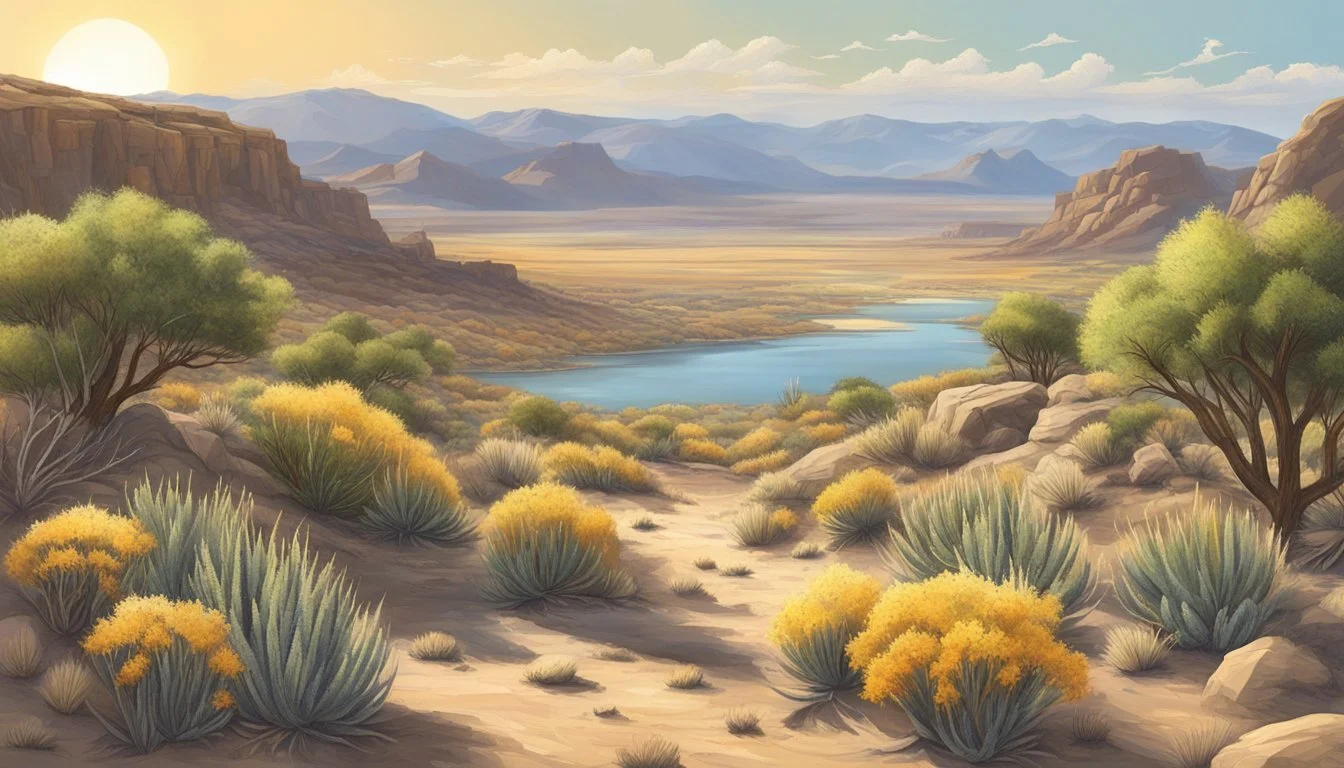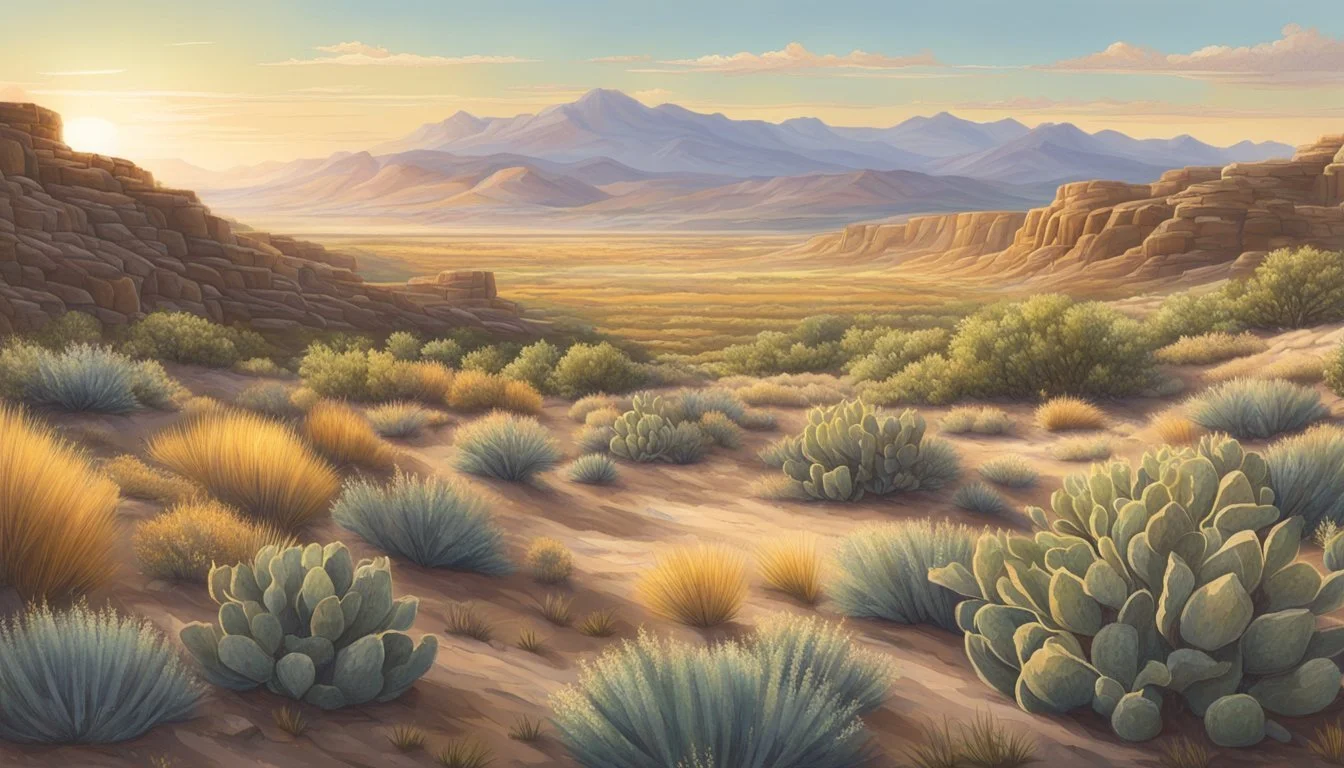Drought-Tolerant Plants in Wyoming
A Guide to Resistant Flora
Gardening in Wyoming presents unique challenges due to its high elevation, variable weather, and dry conditions. Consequently, drought-tolerant plants are highly sought after by gardeners looking to create hardy landscapes that thrive despite limited water resources. These plants have adapted to survive in arid climates by developing various mechanisms, such as deep root systems and water-retentive leaves, which allow them to withstand prolonged periods of drought.
There is a diverse range of plants native to Wyoming that are not only drought-resistant but also contribute to the local ecosystem's health. Sagebrush, for example, is a staple among these species, found in abundance across the state's plains and basins. The resilience of such plants makes them a practical choice for Wyoming gardens, where water conservation is of utmost importance. Drought-tolerant plants often require less maintenance and are more capable of coping with the state's environmental stresses, leading to sustainable and vibrant landscapes.
Selecting the right plants for a water-wise garden in Wyoming isn't just about practicality; it's also about embracing the native beauty of the region. Plants that are well-adjusted to Wyoming's climatic conditions tend to perform better and enhance the natural aesthetic. Strategies such as choosing plants for specific site conditions and utilizing efficient watering practices can help to establish a thriving garden in Wyoming's challenging environment, ensuring both beauty and sustainability.
Understanding Drought and Its Impact on Wyoming Landscapes
Drought presents a significant challenge to Wyoming’s landscapes, affecting soil moisture and planting choices. Adapting to the state’s climate demands a focus on drought-tolerant landscaping to ensure the sustainability of local ecosystems.
Climate Conditions in Wyoming
Wyoming's climate is characterized by its semi-arid conditions, which contribute to frequent and sometimes severe droughts. The state's climate is defined by its low precipitation and extreme temperature variations, leading to challenges in maintaining traditional landscapes. Data indicates that certain regions of Wyoming are susceptible to periods of prolonged dryness, affecting both the water supply for irrigation and the natural resilience of the soil. Reviewing the Wyoming Climate Atlas, it's clear that these conditions are becoming more intense, leading to increased drought severity.
Benefits of Drought-Tolerant Landscaping
Drought-tolerant landscaping involves selecting plants accustomed to the arid climate of Wyoming, which requires less water and is more resilient to drought conditions. Such landscaping conserves water, a critical resource in this state, and supports native biodiversity. One practical advantage is that it can result in reduced maintenance costs and less strain on water resources, as drought-tolerant plants are typically well-adapted to thrive with minimal irrigation beyond natural rainfall. Implementing these practices can also mitigate the impacts of drought on the land, preventing soil erosion and loss of habitat for local wildlife. These strategies are essential for maintaining the health and beauty of Wyoming's landscapes despite challenging conditions.
Challenges of Growing in Dry Conditions
Growing plants in Wyoming's dry conditions poses several challenges. The soil in drought-impacted areas may lack essential nutrients and struggle to retain moisture, making it less hospitable for many plant species. Additionally, finding the right balance of drought-tolerant plant species that can withstand the scarce water supply while contributing to a diverse and aesthetically pleasing landscape requires informed selection and planning. Moreover, the unpredictability of drought patterns, often shifting from dry to wet at infrequent intervals, necessitates a dynamic approach to landscape management. These challenges underscore the importance of understanding and responding effectively to the varied climate aspects in Wyoming for successful cultivation.
Characteristics of Drought-Resistant Plants
In Wyoming, where water conservation is crucial, drought-resistant plants are particularly valuable. These species exhibit specific adaptations and have distinct soil preferences that enable them to thrive in arid conditions.
Adaptations to Dry Environments
Drought-tolerant plants have evolved a range of physical and physiological traits to survive in dry environments. Deep root systems are a common adaptation that allows plants to access moisture from deeper soil layers. Others, such as small leaves or silvery foliage, reduce water loss by minimizing the leaf surface area exposed to the sun. Some drought-resistant plants also possess succulent tissues that store water, or leaf modifications like waxy coatings that reduce evaporation. Native plants in Wyoming, like the sagebrush, have such attributes that equip them to withstand prolonged periods without rainfall.
Soil Preferences for Drought-Tolerant Species
The soil preferences for drought-tolerant species often include well-drained lands that prevent water from accumulating around the roots, which can lead to rot. These plants typically thrive in poor soils that many other species find inhospitable. They are adapted to conditions where organic matter is scarce, relying instead on their efficiency in water and nutrient use. For instance, the ability to flourish in soils with low levels of organic matter is a trait seen in many native Wyoming plants, which have adjusted to local soil conditions over time. The key to their success lies in the ability to maximize the limited resources the environment provides.
Selecting the Right Plants for Wyoming
When gardening in Wyoming, the selection of plant species is crucial. One must consider the resilience of these plants to the state’s climate and their ability to prosper with minimal water.
Native Plants and Their Advantages
Wyoming’s native plants are well-adapted to thrive in the state's rough conditions due to their evolution in North America's specific climates. These drought-tolerant plants have advantages as they require less water and are generally resistant to local pests and diseases. Notably, the native plant species contribute positively to local ecology by supporting local wildlife.
Examples of Wyoming’s native plants include:
Wyoming Indian Paintbrush (Castilleja linariifolia): Thrives in the dry conditions of Wyoming's prairies.
Big Sagebrush (Artemisia tridentata): Serves as a foundation plant in the state’s sagebrush steppe ecosystem.
For more detailed information, the Plants with Altitude guide provides a comprehensive list of regionally native plants for high-elevation areas.
Non-Native Drought-Resistant Options
While native plants are often recommended, there are also non-native drought-tolerant plants that can be suitable for Wyoming. These plants have been identified for their ability to adapt to the local environment without excessive water needs. It is important to ensure they are not invasive and will not disrupt the local ecosystems.
A selection of non-native drought-tolerant plants includes:
Russian Sage (Perovskia atriplicifolia): A hardy perennial with aromatic foliage and attractive lavender flowers.
Yellow Ice Plant (Delosperma nubigenum): A ground cover known for its succulent leaves and daisy-like yellow flowers.
Careful selection is necessary to avoid any adverse ecological impact. For safe options, gardeners can refer to resources like the EPA’s water-efficient landscaping guide.
Designing Your Drought-Resistant Garden
Creating a drought-resistant garden in Wyoming requires thoughtful planning and sustainable practices. This guide focuses on landscape essentials and methods for integrating wildlife-friendly elements to support a thriving, water-wise environment.
Landscape Planning Principles
One begins the process by assessing the terrain and soil type, as these are critical in determining which drought-resistant plants will thrive. Wyoming gardens benefit from native shrubs and grasses that are accustomed to the local climate and require less watering. The key is to arrange plants with similar water needs together, creating zones, or 'hydrozones,' for efficient water use.
Right Plant, Right Place: Choose native wildflowers and shrubs that are well-adapted to Wyoming's climate.
Soil Improvement: Amend soil with organic matter to improve moisture retention and drainage.
Incorporating Wildlife-Friendly Features
Designing a garden with wildlife in mind enhances the ecosystem, supporting pollinators such as bees and butterflies. To attract these beneficial creatures:
Plant Diversity: Incorporate a variety of flowers and wildflowers that bloom at different times of the year.
Natural Habitats: Use shrubs and grasses to create shelters for wildlife, offering protection and nesting sites.
Incorporating these principles not only conserves water but also nurtures a landscape that is green, robust, and welcoming to local wildlife.
Practical Gardening Tips for Dry Climates
Creating a flourishing garden in Wyoming's arid conditions demands intelligent water use and strategic planting choices. These practical tips can help gardeners achieve a green and vibrant landscape that thrives despite the challenging climate.
Water Conservation Techniques
Mulching: Applying a layer of mulch around plants can dramatically reduce moisture loss. Organic mulches like straw or wood chips should be laid 2 to 4 inches thick to effectively retain water and suppress weeds.
Drip Irrigation: Implementing drip irrigation systems can lead to substantial water savings. By delivering water directly to the roots of plants, drip systems minimize evaporation and ensure that water is not wasted.
Optimal Planting Strategies
Planting Time: In dry climates, planting during the cooler months can give plants a strong start. Fall plantings allow plants to establish roots, taking advantage of the winter moisture.
Low-Maintenance Plants: Choosing plants that are naturally adapted to dry conditions can make landscaping more sustainable. Plants like the Silver Lace Vine, as noted by Epic Gardening, can offer both beauty and resilience.
Strategic Landscaping: Organizing plants according to their watering needs ensures that water is used efficiently. This technique, called hydrozoning, involves grouping together plants with similar water requirements to avoid over-or under-watering.
By following these focused strategies, Wyoming gardeners can cultivate a thriving and environmentally-conscious garden.
Maintenance and Care for Established Plants
Established drought-tolerant plants in Wyoming require specific care to thrive, particularly in terms of dealing with extreme temperatures and pest control. Proper maintenance includes a range of practices like mulching and prudent pruning, all aiming to strengthen plant resilience.
Protecting Plants from Extreme Heat
Mulching: Applying a 2-3 inch layer of organic mulch can help retain soil moisture and protect plant roots from extreme heat. This conservation method is integral to maintaining soil temperature, reducing water evaporation, and preventing weeds.
Watering: It's essential to water established plants deeply yet infrequently to encourage deep root growth, which, in turn, enhances drought resistance. The best time to water is early in the morning or late in the evening when temperatures are cooler.
Dealing with Pests and Disease
Regular Inspections: Check plants regularly for signs of pests or disease. Early detection is key to prevent spread and mitigate damage.
Pruning: Pruning damaged or diseased limbs can help prevent pest infestations and disease spread, improving air circulation and reducing favorable conditions for pests.
Organic Pesticides: When needed, opt for organic pesticides to manage pest outbreaks. This protects the ecosystem's balance while maintaining plant health.
By following these targeted practices, gardeners in Wyoming can ensure their drought-tolerant plants not only survive but thrive, with minimal intervention and sustainable resource use.
Exploring the Ecosystem Advantages
Drought-tolerant plants play a pivotal role in sustaining Wyoming's ecosystem by curtailing soil erosion and enhancing local biodiversity. These resilient species contribute to a balanced and enduring environment.
Soil Erosion Control and Improvement
Drought-tolerant plants are adept at stabilizing soil. Their deep root systems bind the earth, reducing the impact of erosion caused by wind and water. This is particularly significant in Wyoming's arid climate where soil can be scarce and easily displaced. Such plants not only prevent the loss of topsoil but also contribute to soil structure and fertility, fostering a hospitable environment for other flora to thrive.
Contribution to Local Biodiversity
Introducing and conserving drought-resistant flora bolsters Wyoming's local biodiversity. These plants often serve as crucial wildlife habitat and food sources for native pollinators, including bees, butterflies, and hummingbirds. The presence of variegated plant life ensures a resilient ecosystem capable of supporting a wide spectrum of wildlife. By supporting diverse pollinator populations, these plants are instrumental in the perpetuation of healthy and diverse plant communities across the landscape.
Seasonal Considerations for Wyoming
In the varying climate and landscape of Wyoming, selecting and caring for drought-tolerant plants requires an understanding of seasonal changes. This ensures a visually appealing garden throughout the year and the survival of native flora.
Choosing Plants for Year-Round Interest
When selecting plants for Wyoming gardens, it's crucial to consider species that provide visual interest in different seasons. Deciduous shrubs offer spring flowers and colorful autumn leaves, while perennial flowers can provide bright colors during the late spring and summer months. It is practical to plant a mix of:
Evergreens: which retain color and structure in the winter.
Grasses: that offer texture even when dormant.
Flowering plants: with varied blooming times to ensure continuous color.
Native plants are a wise choice as they are inherently attuned to the North American climate and Wyoming's specific conditions.
Adjusting Care Through Seasons
The care regimen for drought-tolerant plants in Wyoming shifts with the seasons. For instance:
Spring: Prepare plants for growth by pruning and fertilizing as necessary. Water new plants until established.
Summer: Implement water-saving measures and mulch to retain soil moisture.
Fall: Reduce watering as plants enter dormancy and prepare for winter by adding mulch for insulation.
Winter: Water evergreens periodically if conditions are dry, as they continue to lose moisture throughout the season.
Landscapers should also be vigilant for signs of stress on plants due to the extreme temperature fluctuations often experienced in Wyoming's climate.
Case Studies and Examples
In this section, we examine practical implementations and strategies related to drought-resistant flora within Wyoming's bounds and how these approaches compare with methods utilized in other American states.
Successful Drought-Tolerant Landscapes in Wyoming
Wyoming's diverse ecosystems require resilient plant species capable of enduring its arid climate. The Nature Conservancy in Wyoming has demonstrated the efficacy of integrating drought-tolerant natives like the Wyoming Big Sage and Western Wheatgrass into area landscapes, leading to reduced water use and maintenance. Some communities have embraced xeriscaping principles, using local shrubs, and grasses that require minimal irrigation, which in turn supports local wildlife and helps maintain ecological balance.
Comparative Analysis: Wyoming vs. Other States
When comparing Wyoming to states such as Arizona and Colorado, it's evident that each employs unique strategies tailored to its environment. Arizona's landscapes, with plants like Agave and Mesquite, have evolved to thrive under extreme heat and drought conditions. Conversely, Colorado's elevation and climate allow for a different palette of drought-tolerant species, such as Blue Grama Grass and Ponderosa Pine. Unlike Montana and Wyoming, both known for cooler climates, states like Florida and Alabama must manage humidity in conjunction with heat, requiring a separate roster of hardy plants like Muhly Grass and Saw Palmetto. The strategies in Kentucky, a state with less arid conditions, lean towards plants with moderate drought tolerance, such as certain Oak species.
Frequently Asked Questions
Exploring drought-resistant flora, this section provides insight into species that can flourish in Wyoming's often arid climate. These questions address native perennials, shrubs, and ground covers that can withstand dryness while contributing to a sustainable landscape.
What native perennials thrive in Wyoming's dry climate?
In Wyoming's dry climate, native perennials such as Blanketflower (Gaillardia aristata) and Purple Coneflower (Echinacea purpurea) are excellent choices due to their deep-root systems that maximize water absorption.
Which Wyoming native shrubs are known for their drought resistance?
Wyoming's native shrubs that are particularly known for their drought resistance include the Sagebrush (Artemisia tridentata) and Rabbitbrush (Chrysothamnus nauseosus), both of which are well-adapted to low-water environments.
Can you list some flowers native to Wyoming that require minimal water?
Flowers native to Wyoming that require minimal water include the Indian Paintbrush (Castilleja linariifolia) and the Rocky Mountain Penstemon (Penstemon strictus), each known for its vibrant blooms and water efficiency.
What are the best low maintenance plants for drought conditions in Wyoming landscapes?
For Wyoming landscapes under drought conditions, the best low maintenance plants are those such as the Blue Grama Grass (Bouteloua gracilis) and Yarrow (Achillea millefolium) which are hardy and require limited water.
Which evergreen plants can survive in Wyoming's arid regions?
Evergreen plants like the Pinyon Pine (Pinus edulis) and Juniper (Juniperus spp.) can survive in Wyoming's arid regions, offering year-round greenery and resilience to prolonged dry spells.
How do I identify drought-resistant ground cover suitable for Wyoming's ecosystem?
To identify drought-resistant ground cover for Wyoming's ecosystem, look for species with characteristics such as extensive root systems, small or narrow leaves, such as the Kinnikinnick (Arctostaphylos uva-ursi), which are indicators of water conservation.

